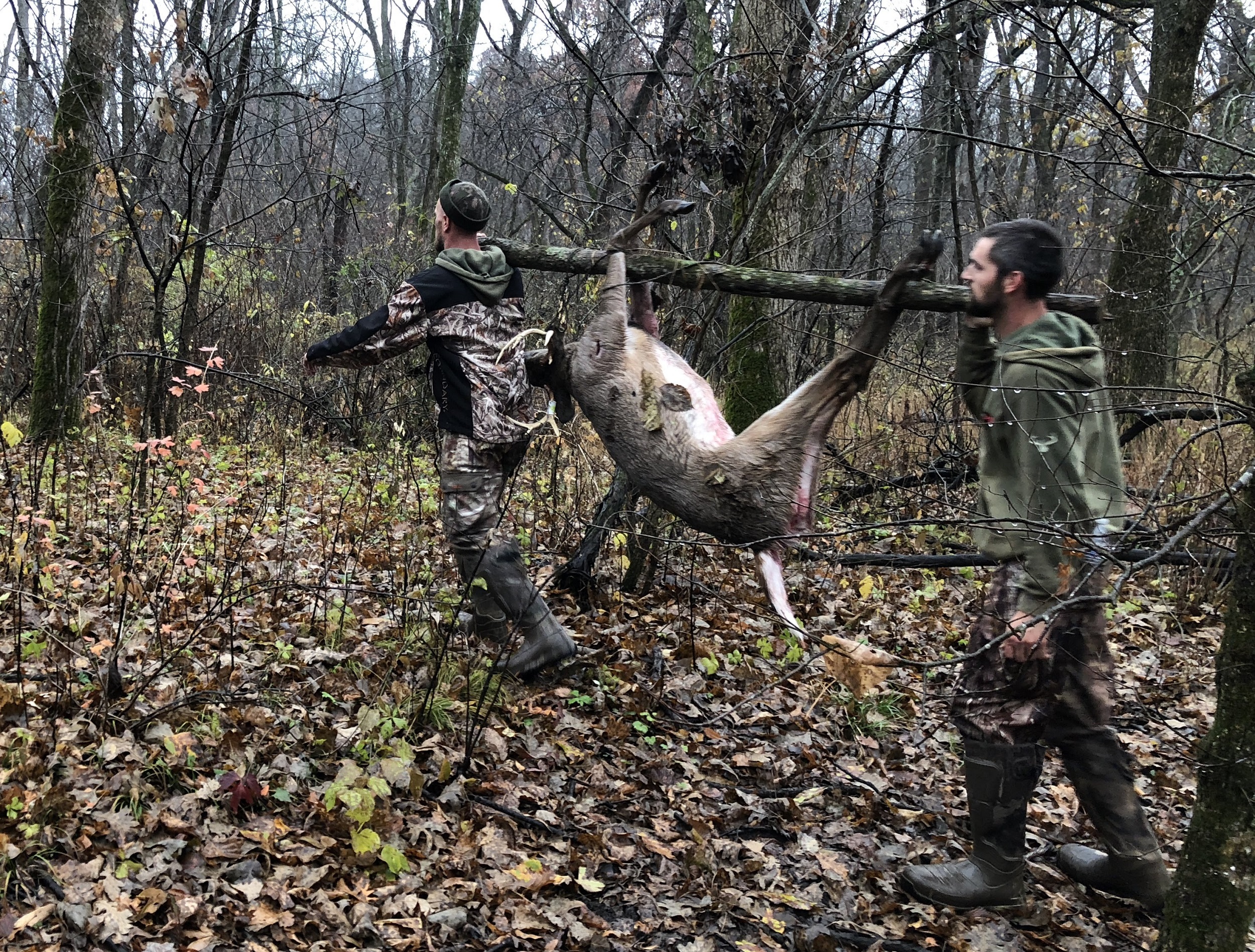Hunting the rut can vary drastically depending on where you hunt. Over the past few years, between hunting in North Dakota and northern Minnesota, I’ve experienced it in two very different ways. Around where I live in Minnesota and where I hunt in North Dakota, it’s a complete 180-degree difference in terms of habitat. These two landscapes provide much different hunting styles and it’s no different during the month of November. Today, I wanted to touch on some of the lessons I’ve learned from hunting ag country and the big woods during the rut, and hopefully, you can find some bit of information that will help you this year or in future years.
The Similarities
I was going to start out with the differences, but there’s a lot more of those, so I figured I’d run through a few of the similarities between hunting the rut in ag country and the big woods first. The first one that sticks out to me above all else is something that is always true during the rut, no matter where you hunt in the country and that’s the does. Simple as that. If you’re where the does are, eventually bucks will show up. A common tactic that has worked and given me opportunities in both settings has been either setting up on the downwind side of doe bedding areas or between doe bedding areas hoping to catch a buck cruising from one to the other.
Another similarity and this may seem obvious, but I feel it’s important to touch on, is to spend as much time in a tree as you can. It doesn’t matter where you are hunting, to me, the rut is all about spending as much time in a tree as you can. Only have an hour after work? Hunt. It’s raining out and you don’t want to get wet? Go hunt. I think you get the point. Spending as many hours as possible in a tree during the month of November can only help you.
The Differences
The first thing that jumps out to me is an obvious one, but where I hunt in northern Minnesota, there are no crops. Period. Crops have an enormous impact on the rut where I hunt in North Dakota. For instance, if a property is surrounded by standing corn, it changes immensely once that corn gets picked. When you hunt ag country, it’s also much easier to identify travel corridors, rut funnels, pinch points, etc. There are smaller amounts of timber, and often times you don’t have to look at a map long to easily pick out a bunch of spots you can guess where bucks will be moving through.
Another significant difference is the number of deer you see. In North Dakota, and this holds true for much of the Midwest in ag country, you can at times see long distances, especially if you’re hunting a field edge. You might have the ability to see a buck cross the end of a field and change your setup for the next day. It also allows you to do things such as decoy effectively as a buck could see it from hundreds of yards away, and if he’s in the right mood, he could be on top of you in a second.
When it comes to a big woods setting, most of the time you aren’t able to see that far. The only parallel I can draw is if you’re sitting over a clear-cut or marsh edge, but they are still a lot different than sitting over a freshly picked cornfield.

I think overall, it can make your hunting tougher. There’s been a number of instances in North Dakota where I got eyes on a buck hundreds of yards away and then made a move on him. I honestly can’t think of a time I’ve done that hunting the big woods of Minnesota. You must rely on your ability to scout and be confident in your setups, even if you don’t see deer. You also have to know when to move.
The last difference that I want to touch on is deer densities. From what I’ve seen, the density of deer is much smaller in the big woods than ag country. This can have multiple implications on how you hunt the rut, but among them, bucks will move further to seek out does in a big woods setting, and calling may not be as effective. I can’t think of many bucks that I’ve called in during my time hunting northern Minnesota, but I could quickly name off multiple instances in which I’ve grunted or rattled bucks in during my hunts in North Dakota. It’s something to keep in mind as you start trying to call this year.
Conclusion
If you are someone that travels to hunt the rut, depending on where you’re going, you may have to adapt to the surrounding and change your hunting style a little bit. I know that if I tried to hunt the northern big woods of Minnesota the same way I do in North Dakota, I would struggle mightily. But by being able to adapt my hunting style between the two different settings, I’m able to experience better hunting.






